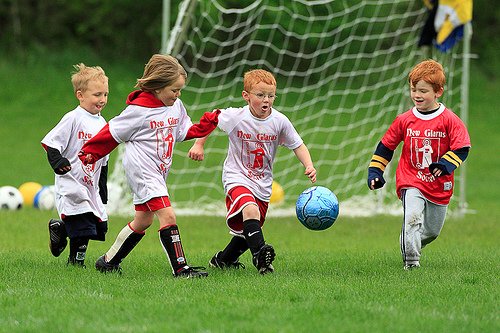

Kids are nonverbal or, as they reach the high school level, minimally verbal. So, how much should I talk… during practices? Not much. I would venture to say that for U-12s no explanation should last more than 10 or 15 seconds. After that half the team is tuning you out unless you are dressed up like a rapper and have a musical accompaniment. Instructions and corrections should be visual and in slow enough motion so the athlete can see it clearly. I prefer the explanation: “Like this” and then I show them.
For under 8’s, explanations are basically nonverbal. This past summer one of my partners took her 6 year old child to Indonesia to meet her side of the family. Michael and his cousins played hours a day with him not speaking their language and their not speaking English. They had a great time. They did not need verbal language. Ask yourself: When I am dealing with my younger kids does my verbiage translate into their action? Do they respond to my words or my tone of voice and body language?
How often should you correct during practices? During the non-scrimmages you should correct mistakes related to the theme of the practice as often as they occur. This should be done in a non-threatening, positive manner with minimal verbal speech and a good demonstration after which the player must execute the action correctly. If mistakes are made from topics in previous practices I would only rarely correct them; rather I would have a review session at the next practice. During the free play, NO CORRECTIONS.
Some say that 9-12 year olds learn in a cyclical manner, that the learning curve is not an arithmetic linear progression. I both agree and disagree. In general I feel that learning is often like using a yo-yo while walking up a flight of stairs. At times the yo-yo is up in your hand and relatively high while at other times it is down at your feet; however, after a few stairs the depths will be higher than the previous heights.
Many soccer skills are linear (taking into account the yo-yo effect). Dribbling is a clear example as are controlling and the skills involved in passing . The more kids dribble, the more they control, the more they pass, the better they will be. That does not mean we will see it in a game right off the bat. In order for a skill to be translated into game action it must be so well integrated into the player’s psyche that it becomes instinctual. This is where repetition is necessary; this is why the serve and the pre-serve (sprint/figure 8/move/reverse/serve) in our FUNdamental SOCCER 1+1 and 1v1 are so important and should never be taken lightly. It is incumbent on us as coaches to create game situations which require the skills or tactics we are teaching to be used in the 1+1 and the small sided games; i.e., you can only score with an instep kick; you can only score after a wall pass; etc.
Always be prepared for some setbacks – remember the yo-yo walking up the stairs. In the heat of competition things will be forgotten. This is why we have to repeat, repeat, repeat in a fun manner. Mistakes are okay. If the person improperly taking the throw in loses the ball he will learn. Take your mental notes then make corrections in practice
While the skills are linear, the tactics are logarithmic. You see very few at first; then in time the player will accidentally do what you have worked on; you will get stoked and enthusiastically positively reinforce his action; three games later he will do it again and receive the same response; the next game he will do it again and maybe get a shot on goal; finally he will have learned that it works and will start doing it frequently. Maybe, some of his teammates will catch on. “Wow, did you see what Jimmy did? I can do that.” Maybe eventually the whole team will do it (and maybe you will win the lottery).
Written for FUNdamental SOCCER
by Leonard J. Marks, MD
Final Notes:
Your FUNdamental,
Koach Karl (Karl Dewazien)